
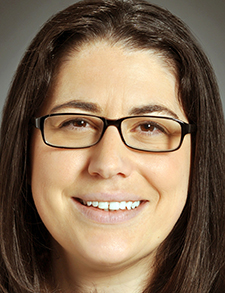
Dr. McFadden
A variety of health care professionals contribute to caring for patients on hospital units. “Maintaining communication and optimizing processes among these multidisciplinary team members is critical to providing the best care possible,” said Vanessa McFadden, MD, PhD, a unit-based, hospital-medicine, medical director in the department of pediatrics at Medical College of Wisconsin in Milwaukee, a free-standing children’s hospital with about 300 beds.
To achieve optimum care, some medical centers have hospitalists or other physicians serve in what’s called a “unit medical director” position.
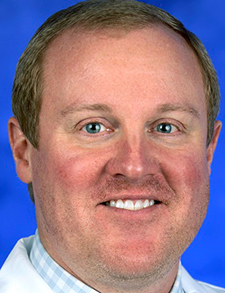
Dr. McGillen
“These individuals help set high-value, patient-centered-care goals with nursing leadership, and then act as liaisons and peer mentors to their provider colleagues to realize these goals,” said Brian McGillen, MD, a hospitalist and associate professor of medicine in the division of hospital medicine at Penn State Milton S. Hershey Medical Center in Hershey, Pa., an academic facility with 485 beds. “These physicians complete the provider-nurse leadership dyad—a hallmark of accountable care units in hospitals—and are responsible for driving organizational value at the nursing unit level.”
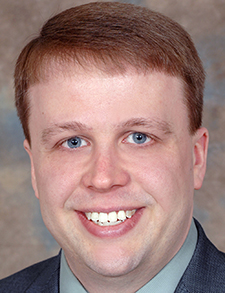
Dr. Held
Responsibilities for practitioners in this role include strategic planning with nursing leadership, coaching, understanding concepts of quality/process improvement, utilization management, and clinical documentation. “Having an understanding of organizational performance metrics—and the drivers behind them—is imperative,” Dr. McGillen said.
Each physician-nurse dyad is responsible for a single geographic area; it can be an entire floor or sometimes part of a floor, depending on the number of patients. “Together they review all reported safety events to identify potential root causes, escalate potential system flaws, and propose and implement interventions,” said Justin Held, MD, SFHM, vice chair of inpatient clinical affairs in internal medicine at the University of Cincinnati, a 500-bed urban academic hospital.
Benefits abound
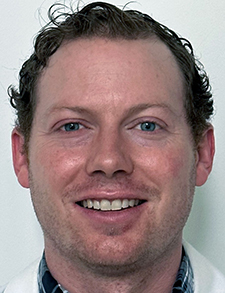
Dr. Chapman
Having a designated point of contact whom staff can feel comfortable approaching helps bridge gaps between different team members. “Successful unit medical directors can understand different points of view and develop solutions that benefit all stakeholders,” said Tyler Chapman, DO, medical director of acute care services in the division of hospital medicine at Penn State Milton S. Hershey Medical Center in Hershey, Pa.
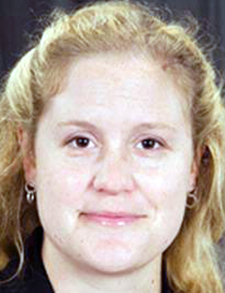
Dr. Zagursky
By being on staff themselves, unit medical directors can learn what other staff members truly care about, what motivates them, and why they entered their fields. “This helps to maintain morale as projects can be tailored to align with these fundamentals and values,” said Jennifer Zagursky, MD, FHM, who serves as a unit medical director and is also a hospitalist and associate division chief of hospital medicine at the University of Rochester Medical Center in Rochester, N.Y., an academic hospital with more than 880 beds.
“Unit medical directors experience firsthand what works well and what could be improved, which makes hospitalists perfect for this type of role,” Dr. McGillen said.
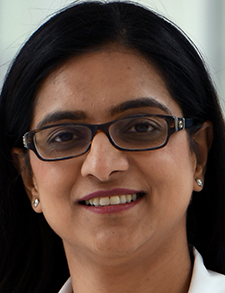
Dr. Goyal
Anupama Goyal, MD, MPH, MBA, a medical director of a 48-bed medical-surgical unit at Michigan Medicine, an academic hospital with 550 beds in Ann Arbor, Mich., has found that disconnects between nurses and physicians happen frequently because of their different workflows and locations.
“Physicians aren’t regionalized to medical units at our hospital while nurses are unit-based, so they communicate with providers using secure chat in electronic medical records or paging,” Dr. Goyal said. “However, physicians aren’t logged into electronic medical records while they’re seeing patients on multiple units and floors. Therefore, they don’t always receive nurses’ messages in real-time, so communication gaps can occur.”
These gaps can cause delays in patient care, patient dissatisfaction, and patient-safety events. Dr. Goyal works with nurses and providers to find optimal ways to bridge these gaps and promote nurse and physician bedside rounding practices.
Helping hospitalists
Ideally, unit medical directors alleviate some of the burden that falls on hospitalists so they can focus on patient care, Dr. McFadden said. These personnel can also address issues across multiple disciplines in real-time, as well as facilitate the development of processes to hopefully prevent future issues.
At Penn State Milton S. Hershey Medical Center, unit medical directors not only participate in direct patient care but also attend regular meetings with hospitalists. “They actively identify systemic and operational areas of improvement and then serve as leaders of change,” Dr. Chapman said.
Unit medical directors also function as peer advisors and educators, and can be important resources in helping hospitalists, especially newer ones, understand hospital-based practices, overcome barriers to care, and serve as sounding boards to discuss difficult clinical conundrums, Dr. McGillen said.
Improving patient experiences
Many of Dr. Zagursky’s projects are designed around improving quality and safety, such as determining how to deliver the best care in the most efficient and effective manner. Some of her initiatives have involved antibiotic stewardship, e.g., decreasing the risk of Clostridioides difficile infection; medication administration, by altering the timing to decrease interruptions and maximize effectiveness; and changing the times when vital signs are checked to decrease unnecessary nocturnal awakenings and decrease the potential for delirium.
“Our unit is fortunate to have a dedicated physical therapist and pharmacist, so we’ve undertaken projects to deprescribe unnecessary medications and improve patient mobility,” Dr. Zagursky said. An added benefit of these projects is a decrease in nurse burden.
By getting to know nurses’ strong suits, Dr. Zagursky’s unit was able to start a program for adult patients with eating disorders who needed medical stabilization. “Previously, these patients had to be processed through the emergency department and then placed on a floor that may not be as experienced,” she said. “Now these patients can be directly admitted to our unit and cared for by staff who understand their disease and can hopefully provide care that decreases the mental and psychological stressors that come with healing.”
Dr. Held develops and implements standard work protocols that keep patients safe. “We don’t want patients to fall and injure themselves or develop infections from a urinary catheter that wasn’t necessary or a central line that should have been removed sooner,” he said. “These efforts also reduce the costs of care and return patients to their regular lives as soon as possible.”
Adding a unit medical director
When looking to add this position, an institution should first determine what value the role will bring. Be as specific as possible. Keep data, with particular attention to unit performance relative to organizational targets, so that this value can be shown to organizational stakeholders over time, Dr. McGillen advised. An understanding of the time requirements is needed, so that appropriate time allocation can be sought up front.
Clearly defined roles and responsibilities allow for easy and efficient delegation to the appropriate medical director, without duplicating efforts. “Our team of unit-based medical directors work to support each other by efficiently updating the group about what is happening on each unit and what action items are needed from the whole group,” Dr. McFadden said. “Having clear processes regarding how those updates happen is critical to the success of a medical director’s team.”
Credentials and skills
Other than being a practitioner, no additional credentials, such as having an MBA degree, are needed to serve as a unit medical director. However, having an understanding of health systems science (HSS) is vital to successfully serve in these roles, Dr. McGillen said.
HSS encompasses many of the extraclinical facets of health care delivery that impact patients. Beyond quality, safety, and value, HSS also incorporates social determinants of health, population health management, leadership and teaming, medical ethics, clinical information technology, and systems thinking, Dr. McGillen said. The latter is a necessary skill set and an approach to examining problems more holistically regarding a health care system’s complexity and how its various components interface.
“Unit medical director roles exist at the intersection of many of these domains; a systems thinker is better equipped to deal with the various issues that might arise on a daily basis,” Dr. McGillen continued.
Coupled with this is the need for a growth mindset—a hallmark of a systems thinker—and a desire to improve constantly, along with the ability to handle conflict, navigate difficult conversations, and coach colleagues to allow for optimal performance of one’s unit, Dr. McGillen said.
Unit medical directors should also be well respected by their unit’s peers and staff, Dr. Zagursky said. They should be able to work well with others, acknowledge their own shortcomings, and be able to have productive, professional, disagreement discussions.
Preventing role creep
Although having a formal contract for a unit-medical-director role isn’t necessary, it’s important to have a clear-cut job description, Dr. McGillen said. Having the ability to advocate for one’s own compensation in case the job description changes is also a necessary skill.
Be sure to have a sound reporting structure as well. “Before stepping into this role, make sure you know who you will report to and be sure that they’re looking out for your development,” Dr. McGillen said.
“Unit directors must be comfortable with delineating work and recruiting others to own certain projects because team members will often look to unit medical directors for help in leading new endeavors,” Dr. Chapman said. “It’s impossible to lead every initiative, as this can result in inefficiencies and burnout.”
Dr. Zagursky recommends keeping a log of your projects and how much time you spend on each of them. If possible, take this a step further and place projects and time under each category of the role’s responsibilities. “Then, when you’re asked to do something that doesn’t neatly fit, it’s a good cue that you need to have a discussion with your boss,” she said. “The person who assigned you this role should expect that you will meet once or twice annually to review what you’re doing and how the role is evolving.”
Karen Appold is an award-winning journalist based in Lehigh Valley, Pa. She has more than 25 years of editorial experience, including as a newspaper reporter and newspaper and magazine editor.